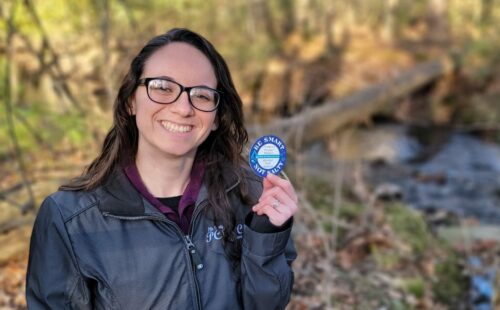News

How to Prepare for Snow Melt

By Rachael Marques, Watershed Specialist
With summer having just passed, it may seem a little early to start thinking about the snow but it’s actually the perfect time. In the past, our region has gotten snow as early as October!
When removing snow from roads, driveways, and sidewalks, we tend to pile it up especially if a plow is being used. We have all probably seen a giant mountain of snow at the back of a parking lot after a snowstorm. Snow, like rain, is a very important part of the water cycle. Though it’s frozen when it falls, once it starts melting problems can arise. Snowmelt can become runoff and even cause flooding when the ground is frozen during the winter. When removing snow, it’s important to consider where you are going to put it for that storm or for the year. Snowmelt can pick up pollutants and other chemicals creating non-point source pollution!
To prevent non-point source pollutants from getting into our waterways, it’s important to consider where we can put the snow on our properties to allow for the most infiltration into soils and groundwater as well as the most filtration before running off into a stream or waterway. Now is a great time to look around and plan a place to put your snow if needed. For example, piling snow adjacent to a rain garden or in a flat area may help the melting snow infiltrate the soil better instead of placing it on a compacted area where it will run off. If you need to pile snow on a paved surface, consider the slope away from the area and where the water will go once the snow is melting. Try not to pile snow where it will run down a driveway or paved area before a stream or drainage ditch. The runoff can pick up oils, sediment, unused salt, and more while running over impervious surfaces like a parking lot or driveway.
Speaking of salt, it’s important to use only as much sidewalk or road salt as needed. Salt is great at melting snow and ice, but too much can cause excess salt to get into our freshwater sources! If you are interested in seeing how much salt may be getting into your local waterway, consider participating in the free Winter Salt Watch Program this year. This time of year is a great time to get a baseline chloride reading in your stream to have as a comparison once winter comes and salt starts getting applied throughout the area. For more information, visit the Izaak Walton League website here: https://www.iwla.org/water/stream-monitoring/winter-salt-watch or contact the Pike County Conservation District. Have a safe happy fall!
Additional information from Penn State Extension: https://extension.psu.edu/melting-snow-its-stormwater-too
